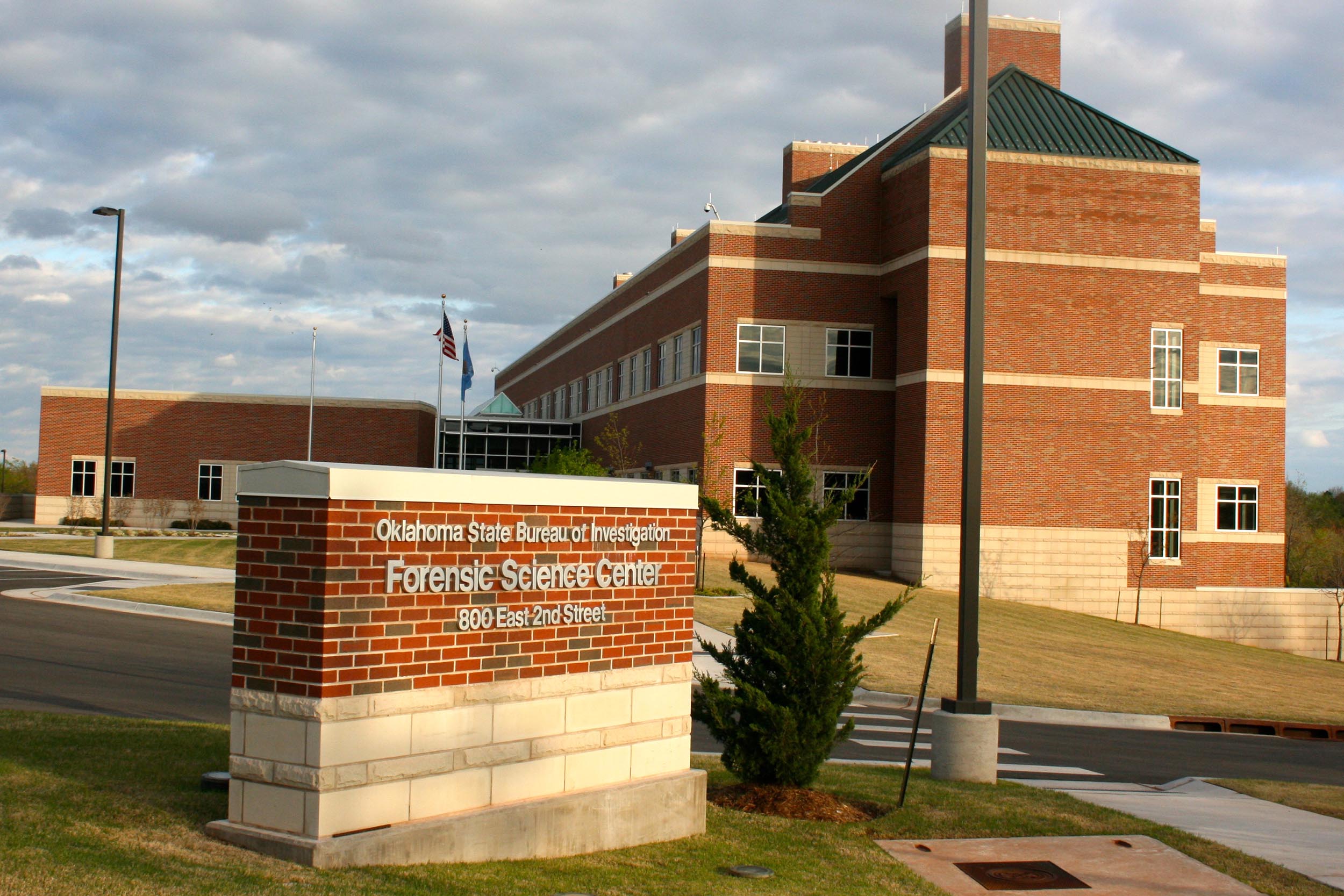OSBI Firearms & Toolmarks Unit
The OSBI Firearms and Toolmarks Unit is a discipline of the OSBI Criminalistics Services Division housed at the Forensic Science Center in Edmond, Oklahoma.
The Firearms and Toolmarks Unit specializes in the identification of fired ammunition components (bullets and cartridge cases), firearms functionality, Integrated Ballistics Identification System (IBIS) entry, serial number restoration, distance determination, and toolmark identification.
Though there is only one firearms and toolmarks unit located in Edmond, firearms evidence can be submitted at any regional laboratory or evidence acceptance facility.
Firearms may not be mailed for analysis.
All submitted firearms must be verified as unloaded.
Information
Firearms Functionality
In many investigations, knowing if a firearm is capable of discharge is an important question to answer. The Firearms and Toolmarks Unit is able to verify if a firearm is capable of discharge and report such findings.
Barrel and Overall Length
State and federal regulations dictate minimum barrel and overall lengths for long guns. The Firearms and Toolmarks Unit is able to obtain a long gun’s measurements via a NIST-traceable ruler and report such findings.
Bullet / Cartridge Case Comparison
During the firing process, microscopic markings are left on the bullet and cartridge case by the firearm. These markings are used to identify if a bullet or cartridge case was fired by a specific firearm; or if multiple bullets or cartridge cases were fired by the same unknown firearm if no firearm is recovered.
General Rifling Characteristics Database Search
If no firearm is recovered, but a bullet is, a list of firearms that could have possibly fired that item can be generated by measuring the general rifling characteristics of the bullet and searching the FBI’s GRC Database.
Integrated Ballistics Identification System (IBIS)
The Firearms and Toolmarks Unit houses the BrassTRAX system, capable of accessing the National Integrated Ballistic Information Network (NIBIN). Test fires from submitted firearms as well as cartridge cases from crime scenes, are evaluated for entry into IBIS.
At this time, the BrassTRAX system searches a local region as dictated by the ATF. The BrassTRAX system can be searched by additional states or regions on request.
The following firearm types and calibers will be evaluated for entry into BrassTRAX.
- Semi-automatic pistols of the following calibers:
- 22 LR / 22 Long Rifle
- 25 Auto / 25 ACP
- 32 Auto / 32 ACP
- 380 Auto / 9mm kurz / 9mm Corto
- 9x18 MAK / 9x18 Makarov
- 9mm Luger / 9mm Parabellum
- 357 SIG
- 40 S&W / 40 Auto
- 10mm Auto
- 45 Auto / 45 ACP
- Semi-automatic rifles of the following calibers:
- 22 LR / 22 Long Rifle
- 223 REM / 5.56x45mm (example: AR-15)
- 7.62x39mm (example: AK-47)
- Rifles that fire any of the above pistol calibers
- Pump-action shotguns
- Semi-automatic shotguns
Serial Number Restoration
Since 1968, all firearms manufactured in or imported into the United States must have a serial number on the frame. This serial number is often obliterated. Polishing and/or chemical means can be used to attempt to restore such obliterated serial numbers.
Muzzle-to-Target Distance Determination
The Firearms and Toolmarks Unit uses visual and chemical means to establish an approximate distance between the muzzle end of the firearm to the target based on deposits of gunshot residue. This analysis requires the target material (i.e. shirt) and the firearm believed to have been used. Distance determination analysis does not measure the intent of the shooter at the time the deposits were made. This analysis is only performed when the distance is in question (i.e. homicide v. self-defense). Before such analysis is requested, the investigator should contact the Firearms and Toolmarks Unit.
Toolmark Comparison
Just as bullets and cartridge cases can be identified to a specific firearm, toolmarks can be identified to a specific tool. The Firearms and Toolmarks Unit will perform comparisons between unknown toolmarks from crime scenes to submitted tools, such as bolt cutters and a padlock, or wire cutters and wire.

Contacts
OSBI Forensic Science Center
800 East 2nd Street
Edmond, OK 73034
Phone: 405-330-6724
Fax: 405-330-6207
Kate Millar
Firearms & Toolmarks Supervisor / Technical Manager
Email: kate.millar@osbi.ok.gov
CSD External Resources
- American Academy of Forensic Science
- ANSI National Accreditation Board (ANAB)
- D.A.R.E.
- Drug Destruction
- Drugs.com Pill Identifier
- K9 Training Aid Destruction
- Trace Evidence Collection Mobile App - Forensic Technology Center of Excellence
- Federal Bureau of Investigation
- Midwestern Academy of Forensic Scientists
- National Forensic Science Technology Center
- National Institute of Justice Programs
- Oklahoma Bureau of Narcotics
- OSBI Employment Process and Opportunities
- Rx Disposal Boxes
- Scientific Working Group for the Analysis of Seized Drugs (SWGDRUG)
- Southwestern Academy of Forensic Scientists
- Title 63. Public Health and Safety
- U.S. Drug Enforcement Administration

